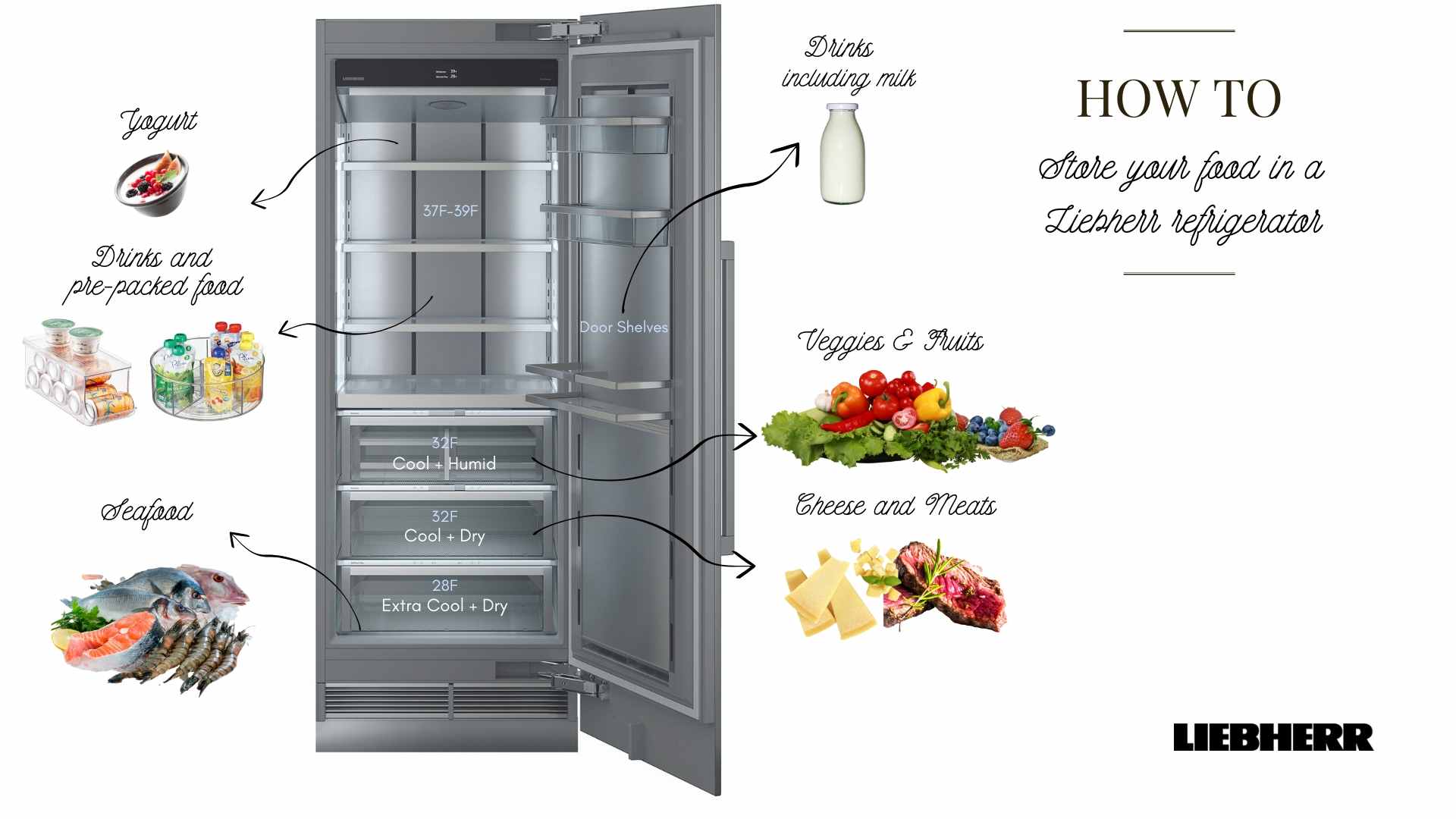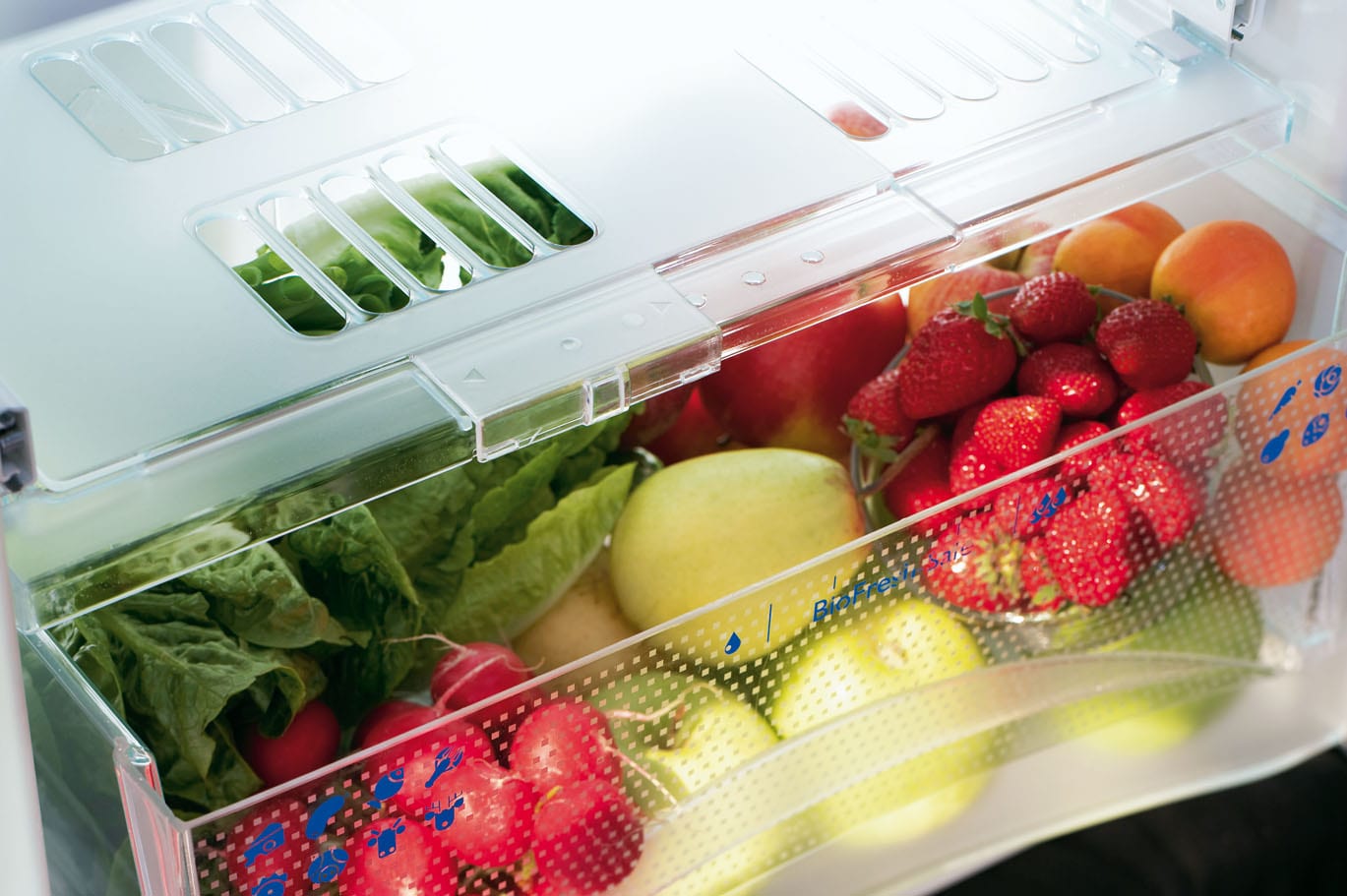
The type of food you buy, and where you place it, can have a huge effect on your eating habits.
1.- PREPARATION: Before your upcoming trip to the store, make a list of what to buy. It seems simple, but it’s easy to get sucked into the vortex of food store roaming. Making a list and sticking to it keep you both focused and organized, and will help you steer clear of unhealthy choices.

2.- GET ORGANISED: Go over your fridge contents once a week. Take out what you didn’t use and take a quick inventory of what you have. This will help you shop better, make healthier choices, and save money on your next store visit. Find a place for each item and keep putting them in their assigned place after each use. If you want to be ultra-organised (and make it look extra pretty), use clear plastic bins for more visibility and label them what is inside (“Snacks,” “Condiments,” “Meat,” etc.).

3.- PRESERVE YOUR FOOD: Where you place the food matters. The fresher the food, the higher its nutritional value + longer shelf life, reducing waste.
- Vegetables need humidity and lower temperatures, that is why I would recommend finding a refrigerator that provides food preservation technologies that regulate temperature slightly above 32°F (0°C), as food stays fresher longer when stored just slightly above freezing point.
- Meats, Cheese and Dairy products should be stored covered in the drawers where the temperature is lower (32°F) and low humidity.
- Seafood should be stored at 28°F in a dry/low humidity drawer.

LABEL, LABEL, LABEL: According to The Home Edit “Labelling helps identify the contents of your drawer or bin, and also helps you easily put away shopping.” To add permanent labels, they recommend a paint marker. For labelling something like cook times or expiration dates, you can use a chalk marker so that you can easily remove it.

5.- REDUCE FOOD WASTE: When you open a clean, organised fridge, it has a positive impact on how you perceive food. People tend to eat fresh and healthy-looking food while throwing away what looks dry or dirty. Keep everything clean and place food in the right place to preserve it and avoid waste!
Here are some ideas to help you stay on track, both in terms of maintaining freshness and to help you reach the nutritional goals you’ve set:
- Make sure nutritious foods are placed in the middle shelves, at eye level. This is important because you are more likely to eat the first thing you see.
- Convenience is everything! Clean and cut your vegetables and fruits so they are ready to eat at a moment’s notice.
- With many refrigerators, the door is the worst place for milk due to temperature fluctuations (unless you have a Liebherr, due to PowerCooling technology) Cold air circulates behind the door to avoid warming when the door is open.

What not to put in the fridge:
Source: Readers Digest
- Honey: Honey is known to seize up and crystallize in cold temperatures.
- Basil: If this tropical plant is stored below 40°F, it turns black quickly. Keep on the counter in a shady place or fill a glass with water and submerge the stems.
- Oranges: Whole oranges store best unwashed, at room temperature. Sliced or sectioned oranges can be stored in the refrigerator in a sealed bag or airtight container. at 40°F.
- Potatoes: Cold temperatures convert potato starch into sugar. This results in a gritty texture and a slightly sweet flavour. Potatoes do best at 45°F
- Onions: Don’t keep near potatoes; onions emit gas and moisture that can cause potatoes to spoil quickly. Refrigerate chopped onions.
- Bananas
- Tomatoes: Cool air alters chemical pathways in tomatoes, slowing those that contribute to fresh flavour and accelerating others that dull flavour. Store whole tomatoes on the counter for more delicious taste.
- Avocados: The creamy green fruit is best kept at room temperature if it’s hard, or if it’s ripe and you plan on using it right away. That said, finicky avocados that quickly go from under ripe to overripe can go in the fridge to last longer.
- Garlic: Garlic cloves fare best in temperatures between 60°F and 65°F.
- Bread: Although keeping bread in the fridge keeps mold away, it also dries out the loaf. Instead, store extra bread in the freezer and bring to room temperature when you are ready to eat them.
- Whole Pineapple: You can leave a whole pineapple on the counter for a day or two, but to keep it at its freshest, it’s wise to slice and store it as soon as possible
I hope you enjoyed this article and that you have all you need to feel inspired to start and maintain a healthy lifestyle! ?
